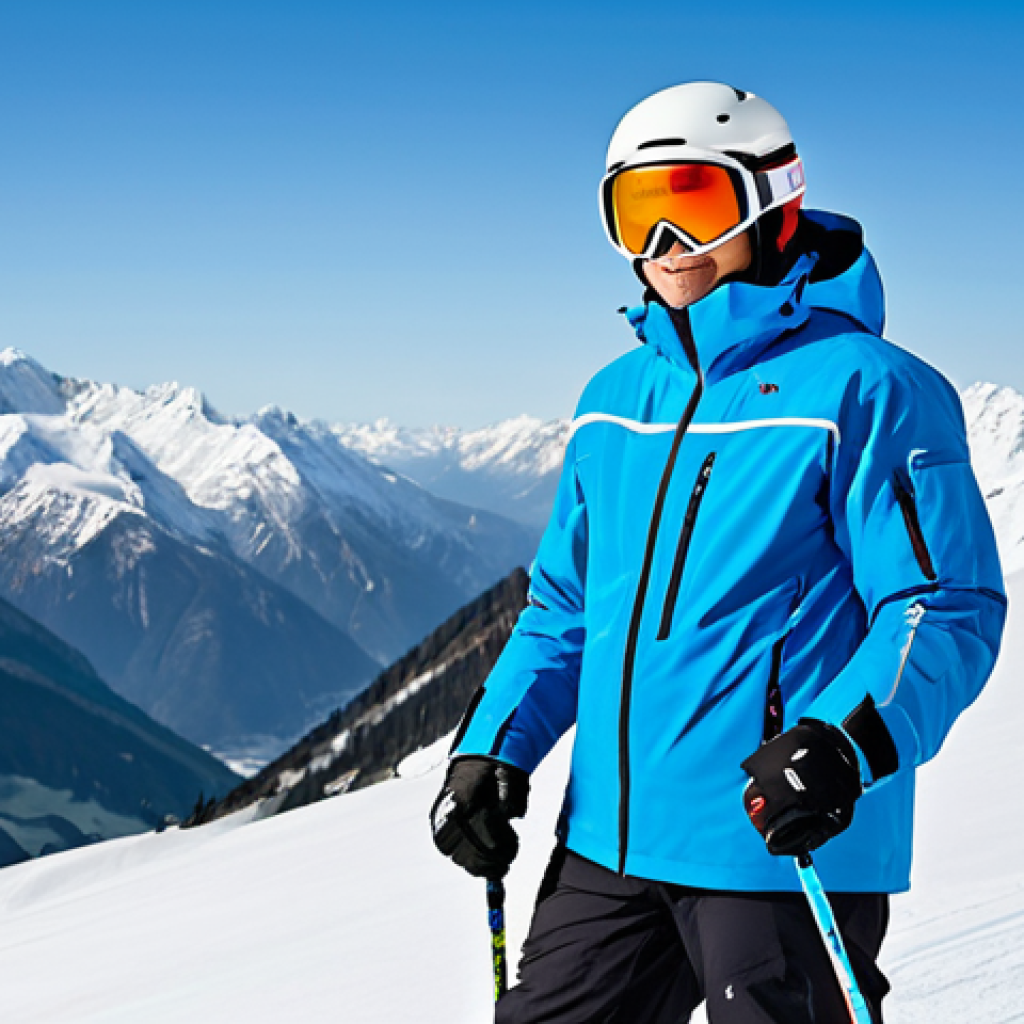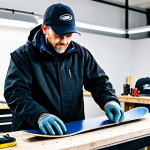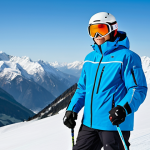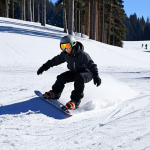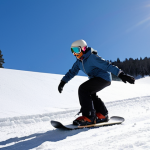There’s nothing quite like the crisp mountain air, the thrill of carving down a freshly powdered slope, and that first deep breath of winter wonderland magic.
But let’s be honest, getting ready for a ski trip can sometimes feel less like a dream and more like a logistical nightmare, right? I’ve been there, staring at an empty suitcase, wondering if I’ve forgotten that one crucial item that could make or break the whole experience.
Especially now, with smart layering systems and eco-friendly gear becoming the norm, the choices can feel overwhelming, and frankly, a bit daunting. I’ve personally learned that even small oversights can lead to truly miserable moments on the mountain.
From the cutting-edge tech in today’s performance base layers designed to optimize warmth and breathability, to the growing importance of sustainable outerwear choices that minimize our environmental footprint on those very slopes we cherish, what you pack truly matters.
My own journey through countless ski trips has taught me that the right gear isn’t just about comfort; it’s about maximizing every moment and staying safe when conditions are unpredictable.
Forget cold toes or wet gloves – those little things can seriously dampen the fun, and nobody wants to spend precious slope time dealing with avoidable discomfort.
I’ll give you the lowdown!
Mastering the Art of Layering: Your Foundation for Mountain Comfort
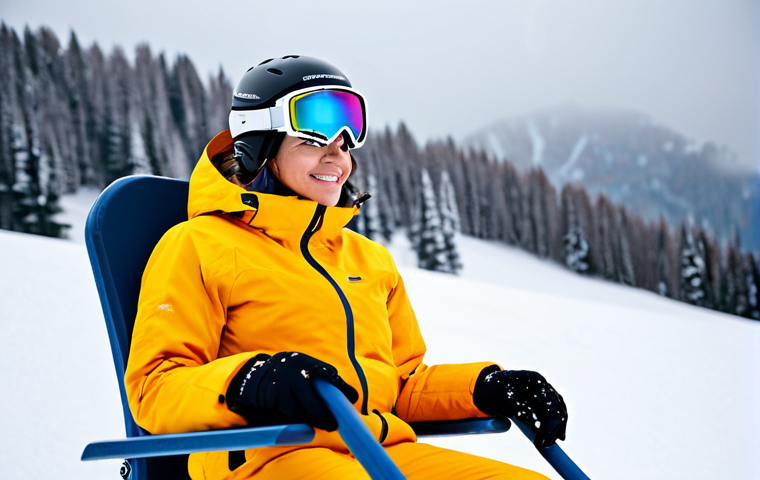
There’s an undeniable magic to being out on the slopes, but that magic quickly fades if you’re shivering or drenched in sweat. I’ve learned, often the hard way, that the secret to staying comfortable, no matter how the weather shifts, lies squarely in the art of layering.
It’s not just about throwing on a bunch of clothes; it’s a strategic system designed to trap warmth, wick away moisture, and provide adaptability. For years, I just piled on cotton sweaters, thinking more layers meant more warmth.
Boy, was I wrong! Cotton, once wet, stays wet and chills you to the bone. It took a few truly miserable, hypothermia-flirting days on the mountain for me to properly understand the science behind technical fabrics and why investing in them is truly non-negotiable for anyone serious about enjoying their ski trips.
I remember one particularly brutal day in the Rockies when the temperature dropped by twenty degrees in an hour. My friends who had opted for the proper three-layer system were still laughing and carving, while I was huddled in the lodge, contemplating how quickly a fun day could turn into a frosty nightmare.
This firsthand experience hammered home the importance of starting with a solid foundation.
The Unsung Hero: Performance Base Layers
Think of your base layer as your second skin – it’s the piece that touches you directly and is responsible for managing your body’s moisture. When you’re skiing, you’re constantly moving, and that means you’re generating heat and, inevitably, sweat.
A good base layer, whether it’s merino wool or a synthetic blend, is designed to wick that moisture away from your skin, pushing it to the outer layers where it can evaporate.
This keeps you dry, and crucially, warm. I’ve personally found that merino wool is a game-changer; it’s naturally odor-resistant, incredibly soft, and surprisingly warm even when damp.
Synthetics are fantastic too, especially for high-intensity days, as they often dry even faster. When I first switched from my old thermal underwear to a proper wicking base layer, I was genuinely amazed at the difference.
No more clammy feeling after a strenuous run, no more chilling during a chairlift ride. It felt like I had unlocked a new level of comfort on the mountain, allowing me to focus on my turns and the incredible scenery rather than constantly thinking about how cold or damp I felt.
Trust me, this is where you don’t want to cut corners – it sets the stage for everything else.
Mid-Layers: Strategic Warmth Without Bulk
Once your base layer is sorted, it’s time to think about insulation. The mid-layer is what provides the primary warmth by trapping air. This could be a fleece jacket, a lightweight synthetic puff jacket, or even a down vest, depending on the conditions and your personal preference for warmth.
The key here is breathability – you want something that will keep you warm but also allow moisture from your base layer to pass through and escape. I usually pack a couple of options: a thinner fleece for warmer, spring-like ski days, and a more substantial insulated jacket for those deep winter, sub-zero temperatures.
On my last trip to Vermont, the mornings were bitterly cold, but by midday, the sun was out, and I was shedding layers. Having a versatile mid-layer meant I could adjust my warmth levels easily, without feeling either overdressed or underdressed.
It’s all about adaptability, and a good mid-layer gives you that crucial flexibility to dial in your comfort precisely as the day progresses. When you’re constantly moving from high-exertion runs to static chairlift rides, being able to regulate your core temperature quickly is invaluable.
Navigating the Outer Shell: Your Ultimate Protection from the Elements
Your outer shell is the final fortress against the mountain’s unpredictable moods. This is where your investment in waterproofing, windproofing, and breathability truly pays off.
Forget those old-school, bulky ski jackets that felt like wearing a sleeping bag. Modern outerwear is sleek, performance-driven, and designed to move with you, not against you.
I’ve gone through countless jackets over the years, from cheap, leaky shells that left me soaked after a gentle snowfall to high-end technical masterpieces that felt like a second skin.
That journey taught me that while the initial sticker shock might be real, the comfort and protection a quality shell provides are priceless. Imagine being on the top of a peak, the wind howling, snow stinging your face – a good shell makes that an exhilarating experience, not a miserable dash for the lodge.
Waterproof & Breathable Jackets: Your Shield Against Snow
The perfect ski jacket is a marvel of engineering. It needs to be fully waterproof to keep out melting snow and sleet, but equally important, it must be breathable to allow the moisture you’ve wicked away with your base and mid-layers to escape.
Materials like Gore-Tex, eVent, or proprietary membrane technologies are the gold standard here. They have microscopic pores small enough to block water droplets but large enough to let water vapor pass through.
I once bought a jacket that claimed to be waterproof but lacked breathability. After just a few runs, I felt like I was skiing in my own personal sauna, clammy and uncomfortable.
That experience cemented my belief that you absolutely need both. Look for features like fully taped seams (where all stitching is sealed to prevent water ingress), water-resistant zippers, and adjustable cuffs and hoods that can seal out the elements.
My current go-to jacket has massive pit zips, which I use constantly – they’re a lifesaver for quickly dumping excess heat on strenuous climbs or warmer spring days, making it incredibly versatile across a range of temperatures.
Ski Pants: Durability Meets Flexibility
Just as crucial as your jacket are your ski pants. They take a beating – from constant contact with snow while sitting on chairlifts to falls (which, let’s be honest, happen to everyone!).
So, durability is key. You’ll want pants made from robust, waterproof, and breathable fabrics, often with reinforced patches on the cuffs or knees to withstand abrasion from ski edges or icy falls.
Beyond protection, flexibility and freedom of movement are paramount. Look for articulated knees that allow for natural bending and movement, and ventilation zippers on the thighs (often called “thigh zips” or “ventilation zips”) are a godsend for regulating temperature.
I made the mistake once of buying pants that were too stiff, and every turn felt like a struggle against my own clothing. Now, I prioritize pants that feel almost like a second skin, allowing me to bend, stretch, and flow with the mountain.
Integrated gaiters with grippers at the bottom are also a must-have to keep snow out of your boots, and trust me, there’s nothing worse than wet feet mid-day because snow crept in.
Essential Accessories: The Small Details That Make a Big Difference
It’s often the small things that can make or break a ski trip. You might have the best jacket and pants, but if your hands are freezing or you can’t see through fogged-up goggles, your day is pretty much ruined.
I learned this lesson early on when I decided to save a few bucks on gloves and ended up with numb fingers just an hour into my first day. The agony was real, and it took away so much from what should have been an incredible day.
These accessories might seem like minor additions, but they play a monumental role in your overall comfort and safety on the mountain.
Gloves & Mittens: Keeping Your Digits Dexterous
Warm, dry hands are non-negotiable for a comfortable ski day. When it comes to gloves or mittens, waterproofing, insulation, and dexterity are your primary considerations.
Many people debate between gloves (more dexterity for buckles and zippers) and mittens (generally warmer because your fingers share body heat). I personally prefer mittens for colder days, especially with a thin liner glove inside for added warmth and when I need to quickly snap a photo.
For milder days, I’ll opt for gloves. Look for options with Gore-Tex or similar waterproof membranes, and sufficient insulation. Some gloves even have small pockets for hand warmers, which is a genius feature I swear by on those truly frigid mornings.
I’ve found that having a backup pair of gloves is also a smart move, just in case one pair gets soaked or lost.
Headwear & Eyewear: Vision and Vital Warmth
Protecting your head and eyes is crucial, both for warmth and safety. A good ski helmet is an absolute must-have – no exceptions. Beyond protecting against impacts, it provides excellent insulation.
I remember a time before helmets became widely adopted, and wearing just a hat on bitterly cold days meant my head was always chilly. Now, with a properly fitting helmet, my head stays warm and protected.
When choosing a helmet, ensure it fits snugly but comfortably, with no pressure points. For eyewear, ski goggles are your best friend. They protect your eyes from UV rays, wind, and snow, and drastically improve visibility in varying light conditions.
I always carry two sets of lenses for my goggles: a dark lens for sunny days and a lighter, high-contrast lens for flat light or stormy conditions. This simple swap can make an enormous difference in your ability to see terrain changes and stay safe.
Sunglasses are also handy for off-slope activities or spring skiing when goggles might be too warm.
Finding Your Perfect Fit: Boots and Socks
If there’s one area where discomfort can completely derail your ski day, it’s your feet. Cold, wet, or blistered feet are a sure-fire way to end your time on the slopes prematurely.
I’ve spent countless hours agonizing over boot fit and sock choices, and I can tell you from personal, painful experience that getting this right is paramount.
It’s not just about comfort; your boots are your connection to your skis, and a good fit directly translates to better control and performance.
The Crucial Connection: Ski Boots That Fit
Ski boots are arguably the most important piece of equipment you’ll buy. They are the direct link between your body and your skis, transferring every subtle movement and intention to the snow.
A properly fitted boot will feel snug but not painful, with no heel lift and ample room for your toes to wiggle slightly. This is one item I strongly recommend buying from a specialized ski shop with experienced boot fitters.
I tried to go the cheaper route once, buying a pair online that seemed like a good deal. They felt fine in the living room, but after two runs on the mountain, I had excruciating pain in my shins and arches.
It was a miserable day, and I ended up having to get them heat-molded and adjusted multiple times, eventually spending more than if I had just gone to a professional from the start.
Don’t make my mistake! Boot fitters can assess your foot shape, arch, and skiing style to recommend the perfect boot and make custom adjustments like heat molding or adding custom footbeds.
This personalized attention makes all the difference in the world.
Socks: A Foundation for Warmth and Blister Prevention
You might think socks are just socks, but for skiing, they are anything but. The right ski socks are thin yet warm, designed to wick moisture away, and provide strategic cushioning without adding bulk that could interfere with boot fit.
Merino wool or synthetic blends are again your best bet. Avoid cotton socks at all costs – they absorb sweat and will leave your feet cold and prone to blisters.
I typically wear one pair of medium-thickness merino wool socks. It might sound counterintuitive, but thicker socks don’t necessarily mean warmer feet, especially if they make your boots too tight and restrict circulation.
I learned this the hard way when I crammed extra-thick socks into my boots, thinking it would make me warmer, only to find my feet turning numb within an hour.
Focus on quality, wicking materials, and a fit that doesn’t bunch up or create pressure points inside your boot.
| Item Category | Key Features to Look For | My Personal Tip |
|---|---|---|
| Base Layers | Moisture-wicking, quick-drying (Merino wool or synthetic), comfortable next to skin. | Invest in high-quality merino wool; it’s worth every penny for odor resistance and comfort. |
| Mid-Layers | Insulating but breathable (fleece, lightweight synthetic down), versatile. | Pack a thinner and a thicker option for adaptable warmth. |
| Outer Shell (Jacket/Pants) | Waterproof, windproof, breathable (Gore-Tex, eVent), fully taped seams, ventilation zips. | Prioritize breathability as much as waterproofing to avoid feeling clammy. |
| Gloves/Mittens | Waterproof, insulated, good dexterity, optional hand warmer pockets. | Consider mittens for colder days and always have a thin liner glove. |
| Helmet | Proper fit, comfortable, safety certified. | Always wear one! Look for MIPS technology for added safety. |
| Goggles | UV protection, anti-fog, interchangeable lenses for varying light conditions. | Carry a spare set of lenses for different weather; it’s a game-changer for visibility. |
| Ski Socks | Moisture-wicking (Merino or synthetic), thin but warm, no cotton! | One pair is usually enough; avoid overly thick socks that restrict circulation. |
Beyond the Gear: Safety and Comfort on the Slopes
While the right clothing and equipment are foundational, a truly successful ski trip extends beyond what you wear. It’s also about what you carry with you for safety, how you fuel your body, and being prepared for unexpected situations.
I’ve seen too many people, myself included in my younger days, head out unprepared for basic emergencies or simple energy dips. A little foresight here can prevent a minor inconvenience from turning into a major ordeal, keeping your focus squarely on the joy of skiing.
From remembering critical safety tools to ensuring you’re adequately fueled, these considerations are the final pieces of the puzzle for a seamless mountain experience.
Slope Safety Essentials: Avalanche Gear and First Aid
For those venturing into backcountry or side-country terrain, avalanche safety gear is not optional – it’s life-saving. This includes an avalanche transceiver, a shovel, and a probe.
Knowing how to use them through proper training is just as crucial as owning them. Even for resort skiing, a small, basic first aid kit is an absolute must-have in your backpack.
I always carry one with essentials like blister plasters (my feet have taught me this lesson repeatedly!), pain relievers, antiseptic wipes, and any personal medications.
You never know when a minor scrape or blister could impact your day, and being able to quickly address it can keep you on the slopes. I remember once taking a tumble and getting a nasty cut on my hand from an icy patch.
My small first aid kit allowed me to clean and cover it quickly, preventing infection and letting me finish my day without concern. It’s about being prepared for the unexpected, giving you peace of mind to truly enjoy your time.
Hydration and Nutrition: Fueling Your Mountain Adventures
Skiing is a physically demanding activity, and your body needs proper fuel and hydration to perform at its best and stay warm. Dehydration can sneak up on you at altitude, and a sudden drop in blood sugar can leave you feeling drained and irritable.
I always pack a reusable water bottle or a hydration bladder in my backpack and try to sip water frequently throughout the day, even if I don’t feel thirsty.
For snacks, I opt for calorie-dense, easy-to-eat options like energy bars, nuts, dried fruit, or even a small sandwich. Stopping for a sit-down meal at the lodge is great, but having quick snacks on hand means you can refuel on the chairlift or at the top of a run without wasting precious ski time.
I also swear by a small thermos filled with hot tea or soup on colder days – that warm liquid hits different when you’re out in the elements and provides a much-needed internal warmth boost.
It’s truly amazing how much better you feel and perform when you’re properly fueled and hydrated.
Eco-Conscious Choices and Smart Packing Strategies
As much as we love the pristine beauty of the mountains, our activities can impact them. Making conscious choices about our gear and how we travel can significantly reduce our environmental footprint.
Beyond that, smart packing is a skill that comes with experience, ensuring you have everything you need without overpacking, which can be a literal burden.
I’ve personally shifted towards supporting brands that prioritize sustainability, and I’ve honed my packing game over many trips to ensure efficiency and comfort.
Embracing Sustainable Gear: Protecting Our Playgrounds
The outdoor industry is making strides in sustainability, and as consumers, we have the power to support these efforts. Look for brands that use recycled materials in their outerwear, insulation, and accessories.
Many companies are now transparent about their supply chains and manufacturing processes, using bluesign® or Fair Trade certifications to ensure ethical and environmentally responsible production.
Opting for durable gear that lasts longer also reduces waste – it’s better for the planet (and your wallet!) to buy one high-quality jacket that lasts a decade than five cheaper ones that fall apart quickly.
I recently invested in a new jacket made from 100% recycled nylon, and it feels good to know that my love for the mountains isn’t contributing to their degradation.
It’s a small step, but collective small steps can lead to monumental change in preserving these beautiful environments for future generations to enjoy.
The Art of Packing: Maximizing Space and Minimizing Stress
Packing for a ski trip can feel like a daunting task, especially if you’re traveling far. My advice: make a list and stick to it! Rolling your clothes tightly or using compression packing cubes can save a surprising amount of space in your luggage.
I also recommend wearing your bulkiest items, like your ski boots and outer jacket, on the plane if possible to free up suitcase space and avoid potential baggage fees.
Remember to pack essentials in your carry-on, including a change of base layers, just in case your checked luggage gets delayed. I learned this the hard way on a trip to Colorado when my bag was rerouted, and I was left scrambling to rent basics for my first day.
Now, my carry-on is always prepared for at least one full day of skiing. Finally, don’t forget to pack any necessary travel documents, lift passes (if pre-purchased), and chargers for your electronics – small details that can cause big headaches if forgotten.
A well-packed bag contributes significantly to a stress-free start and end to your adventure, letting you focus on the exhilarating descent ahead.
Concluding Thoughts
As you can see, mastering the art of layering and choosing the right gear isn’t just about staying warm; it’s about unlocking the full potential of your mountain adventures. It’s an investment in comfort, safety, and ultimately, pure enjoyment. From those exhilarating carving turns to the quiet beauty of a snowy landscape, every moment on the slopes becomes infinitely more magical when you’re truly comfortable.
So, next time you plan a ski trip, remember these lessons learned, often through trial and error, and gear up wisely. Your body will thank you, and you’ll be free to focus on the thrill of the descent, the camaraderie of friends, and the breathtaking majesty of the mountains. Happy skiing!
Helpful Tips for Your Ski Trip
1. Weather Watch is Key: Always check the mountain weather forecast the night before and the morning of your ski day. Conditions can change rapidly at altitude, and knowing what to expect (wind chill, snowfall, sunny skies) will help you fine-tune your layers and gear choices for optimal comfort.
2. Consider Renting vs. Buying for Beginners: If you’re new to skiing or only go once a year, renting skis and poles, and possibly boots, can be a great way to start without a huge upfront investment. High-quality rentals often provide excellent performance and allow you to try different types of equipment before committing to a purchase.
3. Invest in a Lesson: Regardless of your skill level, a ski lesson can dramatically improve your technique, confidence, and enjoyment. Certified instructors can provide personalized tips on everything from carving turns to navigating varied terrain, making your time on the slopes safer and more fun.
4. Beware of Altitude Sickness: If you’re traveling to a high-altitude ski resort, be aware of the signs of altitude sickness (headache, nausea, fatigue). Stay hydrated, avoid excessive alcohol on arrival, and take it easy on your first day to allow your body to acclimatize. Listen to your body and descend if symptoms worsen.
5. Plan Your Breaks and Fuel Strategy: Skiing is demanding, so plan for breaks to rest, rehydrate, and refuel. Knowing where the lodges, restrooms, and water fountains are on the mountain can save you time and energy. Packing your own snacks and a thermos of hot liquid can also save money and keep your energy levels consistent throughout the day.
Key Takeaways
Effective layering is paramount for adaptability and comfort, comprising a moisture-wicking base, insulating mid-layer, and protective outer shell.
Prioritize expertly fitted ski boots as they are your crucial connection to the skis, directly impacting control and performance.
Don’t overlook essential accessories like waterproof gloves, anti-fog goggles, and a well-fitting helmet for safety and comfort.
Always carry basic slope safety items, including a first aid kit, and ensure proper hydration and nutrition to sustain your energy.
Embrace sustainable gear choices and smart packing strategies to enhance your trip while minimizing environmental impact.
Frequently Asked Questions (FAQ) 📖
Q: You mentioned small oversights can ruin a trip. What’s the one piece of gear you’ve found people most often underestimate or forget, leading to a miserable day on the mountain?
A: Oh, this is a classic trap, and I’ve seen it happen countless times! For me, it always comes back to the base layers and socks. Seriously.
People will splurge on top-of-the-line skis, a fancy jacket, but then show up with cheap cotton socks or a basic cotton t-shirt as their first layer. I remember one trip to Revelstoke where my buddy thought his heavy cotton hoodie would be fine under his shell.
By lunchtime, he was soaked with sweat, then freezing because cotton holds moisture. He was absolutely miserable. Proper merino wool or synthetic base layers (top and bottom) and ski-specific wool socks are non-negotiable.
They wick moisture away, keeping you dry and warm even when you’re working hard, and prevent those awful cold, clammy feelings. It’s the foundation of your entire warmth system, and if that’s wrong, the rest doesn’t matter.
Q: With so much talk about sustainability these days, how can I actually pick eco-friendly ski gear without feeling like I’m compromising on performance or spending a fortune?
A: This is a fantastic question, and one I’m really passionate about because it is possible to do both! My personal approach is to look for transparency and durability.
Brands like Patagonia and Picture Organic Clothing, for example, are really stepping up, using recycled polyester from old plastic bottles for their outer shells, and working with PFC-free DWR (Durable Water Repellent) coatings.
Those nasty chemicals used to be everywhere! I also lean towards natural fibers like merino wool for base layers because it’s renewable and naturally odor-resistant, meaning fewer washes.
The trick isn’t always finding the absolute cheapest eco-friendly item, but rather investing in quality pieces that are built to last. I’ve had some gear for nearly a decade now, and that longevity is incredibly sustainable.
Plus, don’t be afraid to check out second-hand markets – I once scored an almost-new, sustainably made Arc’teryx jacket on Facebook Marketplace for a fraction of the retail price.
It’s about conscious consumption and making your gear work hard for you and the planet.
Q: Beyond just keeping warm and dry, what are your top tips for choosing gear that specifically helps with safety, especially when mountain conditions can be so unpredictable?
A: Safety on the mountain is absolutely paramount, and the right gear plays a huge role. It’s not just about staying warm; it’s about being prepared for anything.
My first, immediate tip is visibility. I can’t stress this enough. When conditions turn ugly, like in a whiteout or even just heavy snowfall, or if you’re in a crowded area, wearing bright, contrasting colors (think neon green, vibrant orange, or electric blue) on your outer shell can literally make the difference between being seen and being missed.
I learned this the hard way during a surprise blizzard at Killington – my dark jacket just blended into the grey. Secondly, a properly fitted helmet is a non-negotiable for me.
It’s not just for beginners; a simple slip or a collision with an unpredictable skier can happen to anyone. I’ve personally witnessed how a well-fitting helmet has prevented serious injury.
Lastly, consider a small, easily accessible first-aid kit in your pack, even if it’s just for blisters or minor cuts, and choose a pack that can carry avalanche safety gear if you’re venturing into the backcountry.
Being prepared for the unexpected is the ultimate safety measure.
📚 References
Wikipedia Encyclopedia
구글 검색 결과
구글 검색 결과
구글 검색 결과
구글 검색 결과
구글 검색 결과
